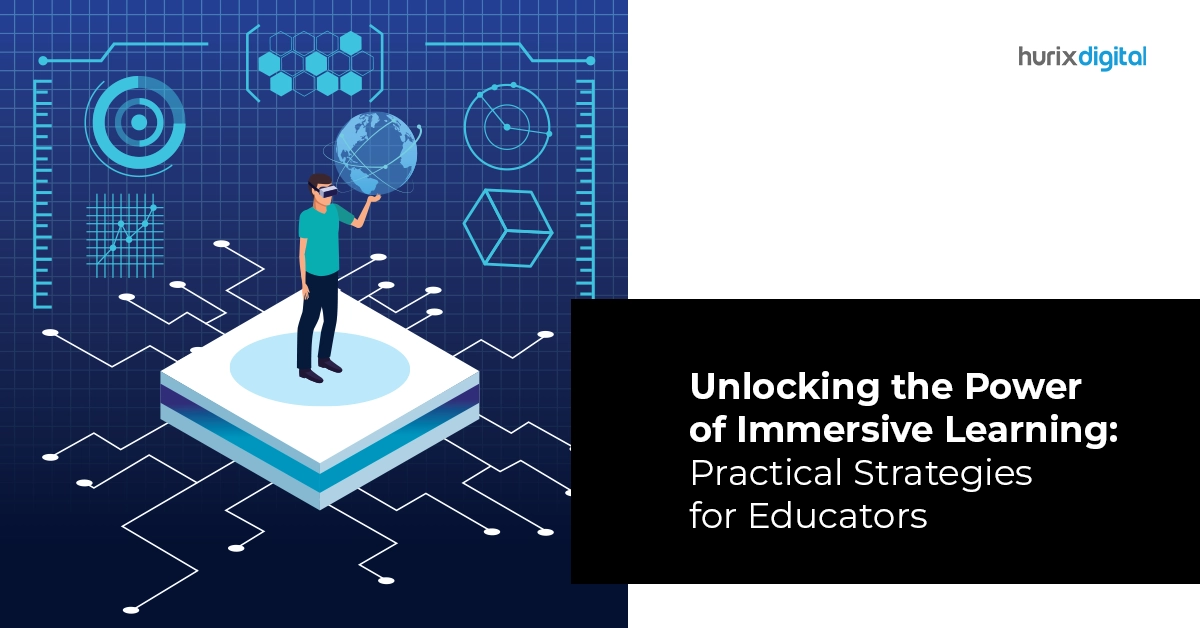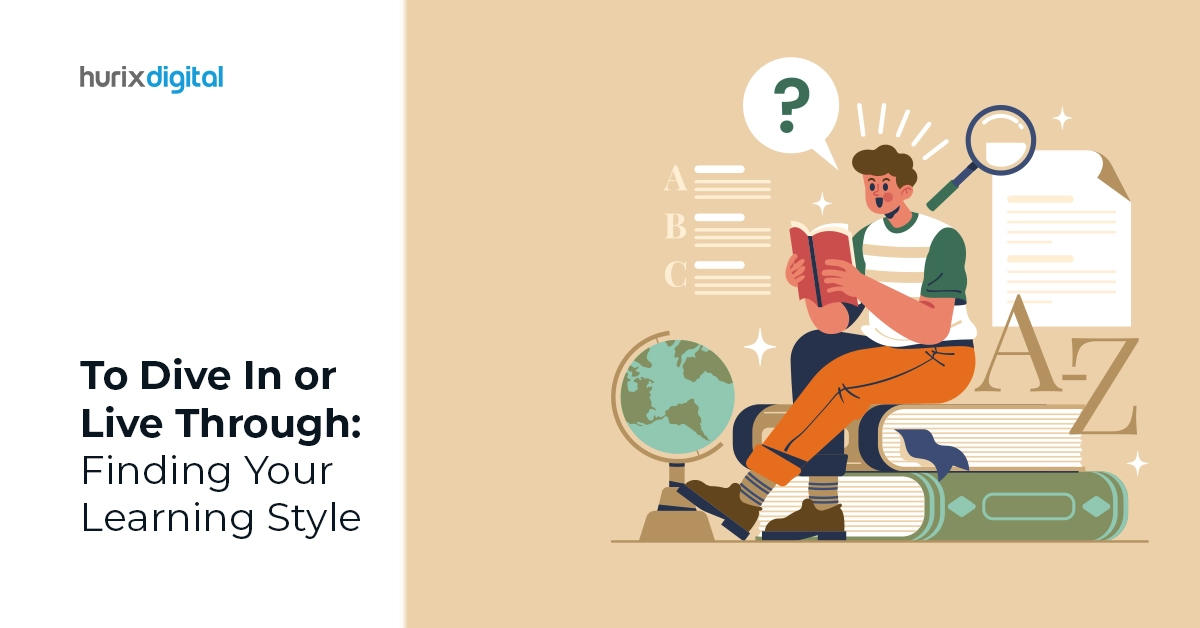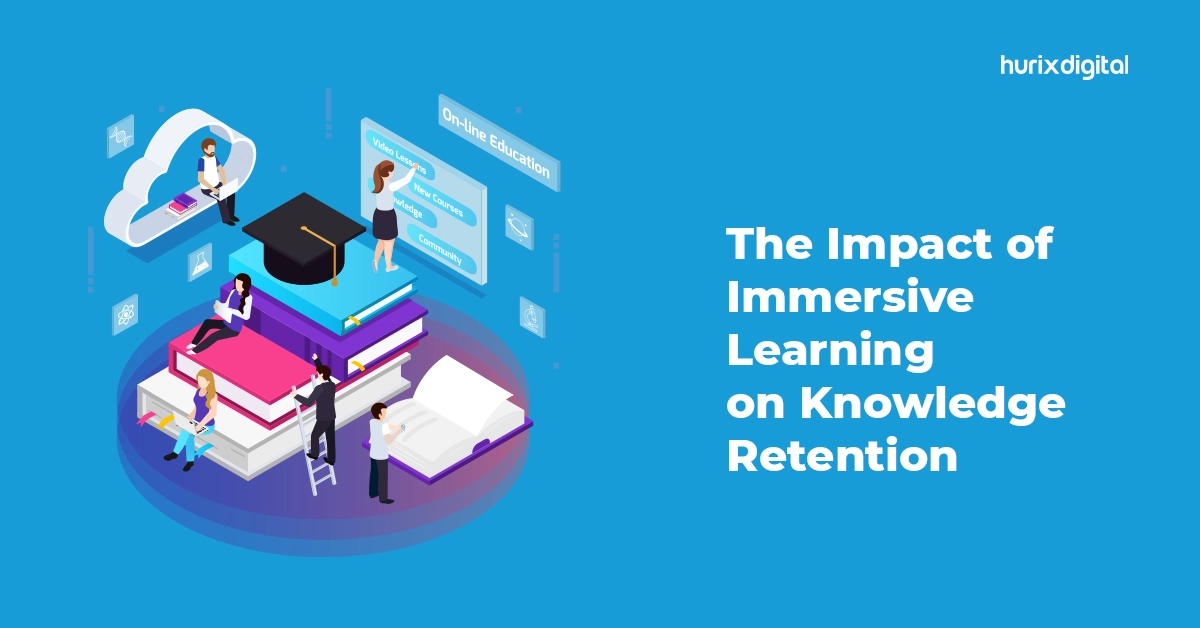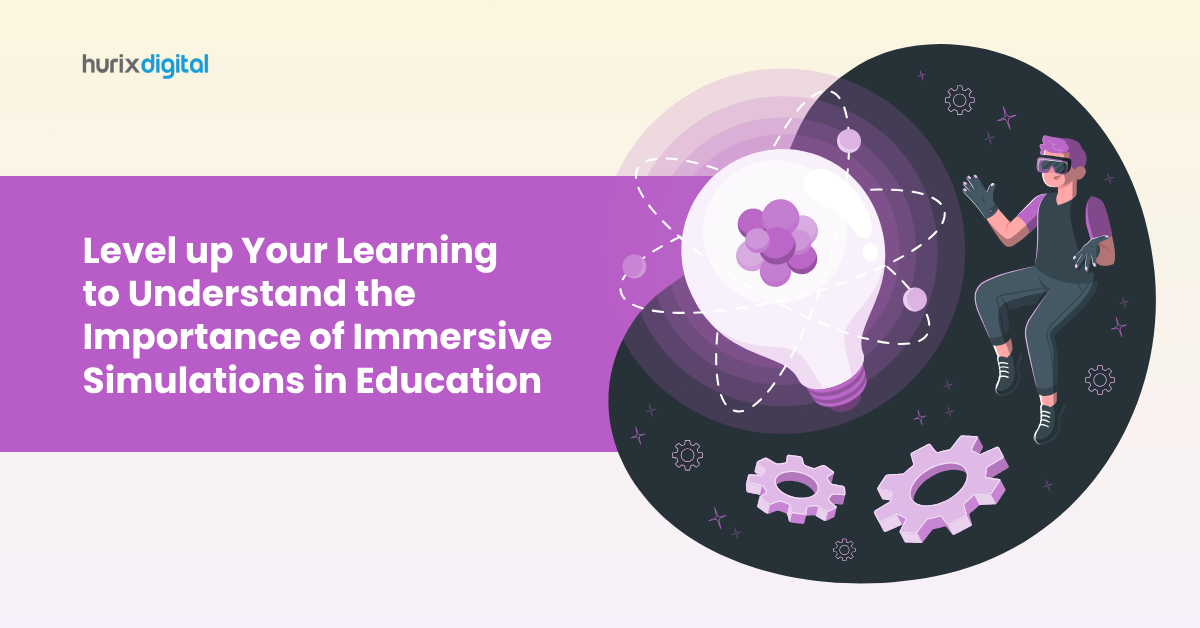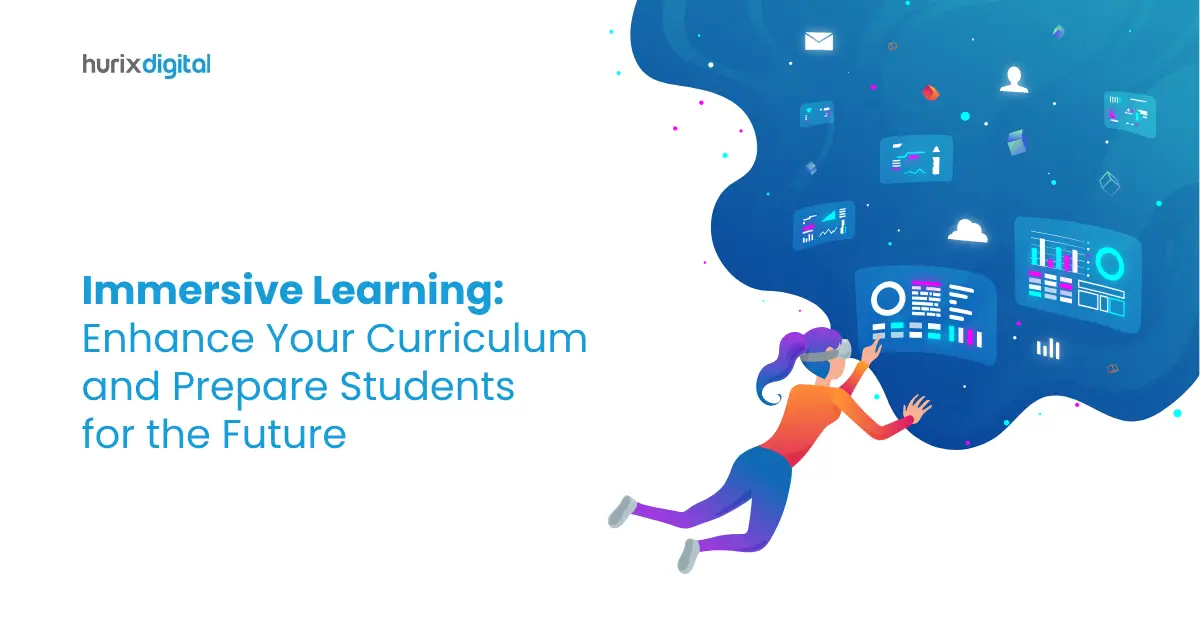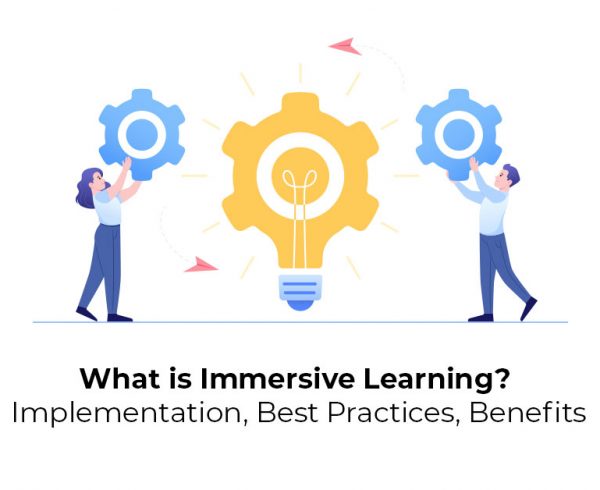Summary
This post highlights the importance of immersive learning and its various types. It also highlighted effective strategies for utilizing its transformative potential.
In an era characterized by growing technological advancements, the conventional model of classroom-based education, featuring an instructor position at the front of a class, is steadily becoming a thing of the past.
An educator’s ability to facilitate active, immersive learning in a participatory setting can greatly enhance a learner’s development by expanding their knowledge base and practical skills.
As per Forbes, learning through immersive experiences can increase knowledge retention by as much as 75%. This highlights the significant impact of immersive learning on knowledge retention and overall educational effectiveness.
In this post, we will explore how immersive learning plays in classrooms. We will also examine its various types and highlight effective strategies for utilizing its transformative potential. Read on!
Table of Contents:
- The Importance of Immersive Learning
- Four Types of Immersive Learning Experiences
- Seven Strategies to Create an Immersive Learning Environment
- Summing Up
The Importance of Immersive Learning
One of the ways immersive learning can make a big impact on both corporate training and classroom teaching is by creating an engaging and memorable learning experience.
It activates multiple senses, such as sight, hearing, and touch and thereby captures students’ attention and keeps them actively engaged in the learning process. This heightened level of engagement results in a deeper understanding of the subject matter and better knowledge retention.
Additionally, immersive learning in education enhances the ability to elicit emotions in learners can further lead to better learning.
Emotionally charged scenarios and simulations allow student engagement with the subject matter in a way that might not be possible with traditional teaching approaches. This emotional connection improves the learning experience and makes it more meaningful and memorable.
Four Types of Immersive Learning Experiences
Whether it’s immersive learning within traditional classrooms, hands-on vocational training, or informal yet engaging encounters like interactive museum displays, familiarizing oneself with diverse technologies marks the initial and essential phase for educators seeking to adopt immersive or blended learning methods.
Each variant of immersive educational technology offers distinct advantages that can be effectively incorporated into various educational settings. These include the following:
1. Virtual Reality
Virtual reality (VR) is one of the most useful technologies to support blended learning, as it enables fully immersive experiences.
Accessible through VR headsets, this experience is often enhanced with headphones and hand controllers, empowering learners to navigate and interact within their virtual environment.
2. Augmented Reality
In contrast to isolating the real world, augmented reality (AR) seamlessly integrates it with digital content. The digital elements can vary, ranging from flat and 2D, ideal for instructional information, to more intricate and lifelike in 3D. Activation of content can be linked to specific objects or geographical locations.
Accessible through mobile devices like smartphones and tablets, learners can easily engage with the content.
3. Mixed Reality
Mixed reality integrates features of both virtual and augmented reality. Like augmented reality, mixed reality overlays digital content onto the real-world environment, connecting and interacting with real-world objects.
A notable distinction lies in the fact that in mixed reality, digital assets can be visibly obscured by real-world objects.
4. 360 Film
360-degree video is typically captured live rather than generated by a computer. While you can experience this content through a VR headset, immersing yourself in the environment, the learner remains tethered to the filmmaker’s viewpoint.
This allows the learner to move their head for a panoramic view, but full interactivity is limited, as they cannot independently walk around or engage with their surroundings.
Also Read: What is Immersive Learning? Implementation, Best Practices, Benefits
Seven Strategies for Creating an Immersive Learning Environment
Like any other form of education or training, immersive learning in education aims to expand a learner’s knowledge base and equip them with new skills.
By adopting immersive learning technologies, educators take the learner’s educational experience to the next level; however, successful implementation can often be challenging.
To navigate this process of introducing immersive educational technologies into their education and training programs effectively, educators can follow certain key teaching strategies, including;
1. Define Learning Objectives
For each immersive learning experience, clearly define the specific learning goals. Determine the exact skills, knowledge, or behaviors that you aim for your students to develop through the program.
Setting clear, targeted objectives ensures that the immersive learning experiences are purposefully aligned with the overall objectives of your organization, providing a focused and guided approach.
2. Immersive Content Design
Create exceptional content specifically designed for immersive learning experiences. Develop engaging scenarios, simulations, or activities that incorporate gamification principles, enabling students to practically apply their knowledge and skills.
Utilize storytelling methods and interactive features to boost learner engagement and memory retention. Continuously update and refine the content to maintain its relevance and to meet the evolving needs of the learners effectively.
3. Use Adaptive Learning Platforms
Adaptive learning platforms are becoming more and more popular across industries, especially in educational technology.
These platforms are pretty cool – they can answer whatever questions users throw at them and figure out how well they’re getting the hang of the material. And with this data, they modify the user’s experience, paving the way for personalized learning.
4. Foster a Culture of Collaboration and Learning
Promote teamwork, knowledge exchange, and learning from peers in the immersive learning environment. Give your students the freedom to share their perspectives, talk about their experiences, and learn from one another.
So cultivate an environment of ongoing learning and development where students feel encouraged to explore, experiment, and actively participate in the immersive-cum-experiential learning community.
5. Make it More Accessible
Incorporate learning on the go and the ability to learn anytime, anywhere into a responsive learning design. Utilize microlearning interventions, just-in-time learning, and on-the-job learning tools as integral components of your immersive learning environment.
Furthermore, make sure the platform is compatible with assistive technology and is available in different formats so that students with visual and hearing impairments can access the subject matter with ease.
6. Seamless Integration with Existing Training Programs
Identify opportunities where immersive learning can support or enrich traditional training methods. Integrating immersive learning into the mix with traditional classroom teaching, online courses, or on-the-job training gives you a well-rounded educational experience.
7. Continuous Evaluation and Feedback
Put in place an evaluation and feedback system to monitor the success of the immersive learning experiences regularly. Get input from students to learn about their opinions, difficulties, and recommendations for development.
To evaluate the effect of immersive learning on staff development and organizational objectives, track learning outcomes, knowledge retention, and performance metrics. Make educated changes and improvements to the interactive learning environment with the use of this data.
Also Read: Navigating Education: Exploring Immersive Learning vs. Blended Learning
Summing Up
Immersive learning enables students to actively participate in real-world scenarios without leaving their place, offering a safe and secure environment in the long run.
If you’re seeking technology solutions to improve your classroom programs, Hurix Digital is ready to assist. Our best-in-class digital content solutions cover K-12, Higher Education, and Workforce Learning.
Contact us today for more details!


